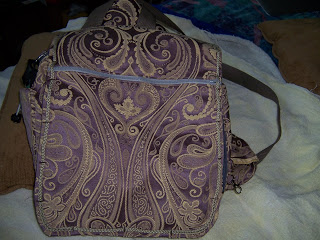A couple of years ago, I started making a December advent calendar that mixed fun stuff with chore stuff, interspersing the scheduled events ("Winter concert") with the pre-Christmas tasks ("put up Christmas lights"). I listed one event per day. I covered each day with a little sticky note; my kids get to take turns peeling the stickies off each day. This has turned out to be a great way to pace myself, and also to include the entire family in Christmas preparations . . . that, and to have a bunch of fun together. (After all, who wouldn't want to enjoy an evening of rousing family banjo/percussion music like "She'll be coming round the Christmas Tree when she comes"? You know you want to join in, too!)
These sticky-note calendars have now become a tradition of sorts. This year, I've made extra copies for my daughters, who live nearby but not in my home; now even though we're spread apart, my kids all know what their mom is up to during this month. And already, the gals have started peeking under the sticky notes to see: which day are we making Springerli? [December 16.] Are we scheduled to go see K-daughter sing in Amahl and the Night Visitors? [yes, December 19]
 This year, thanks to a cute idea I got off Pinterest, I added a new twist to these calendars: printing on top of the sticky notes themselves.
This year, thanks to a cute idea I got off Pinterest, I added a new twist to these calendars: printing on top of the sticky notes themselves.
Here's how I did this. First, I printed the calendar, and I cut the sticky notes to size and placed them over individual days. In this picture, you can see almost all the days covered.
 This year, thanks to a cute idea I got off Pinterest, I added a new twist to these calendars: printing on top of the sticky notes themselves.
This year, thanks to a cute idea I got off Pinterest, I added a new twist to these calendars: printing on top of the sticky notes themselves.Here's how I did this. First, I printed the calendar, and I cut the sticky notes to size and placed them over individual days. In this picture, you can see almost all the days covered.
Then I make sure the sticky notes are smoothed down, and send this sheet (sticky notes and all) through the printer again. This time, I print the calendar with the days (1, 2, 3, . . . ) but without the activities; I also added a picture of trees (because I love trees, naturally).































